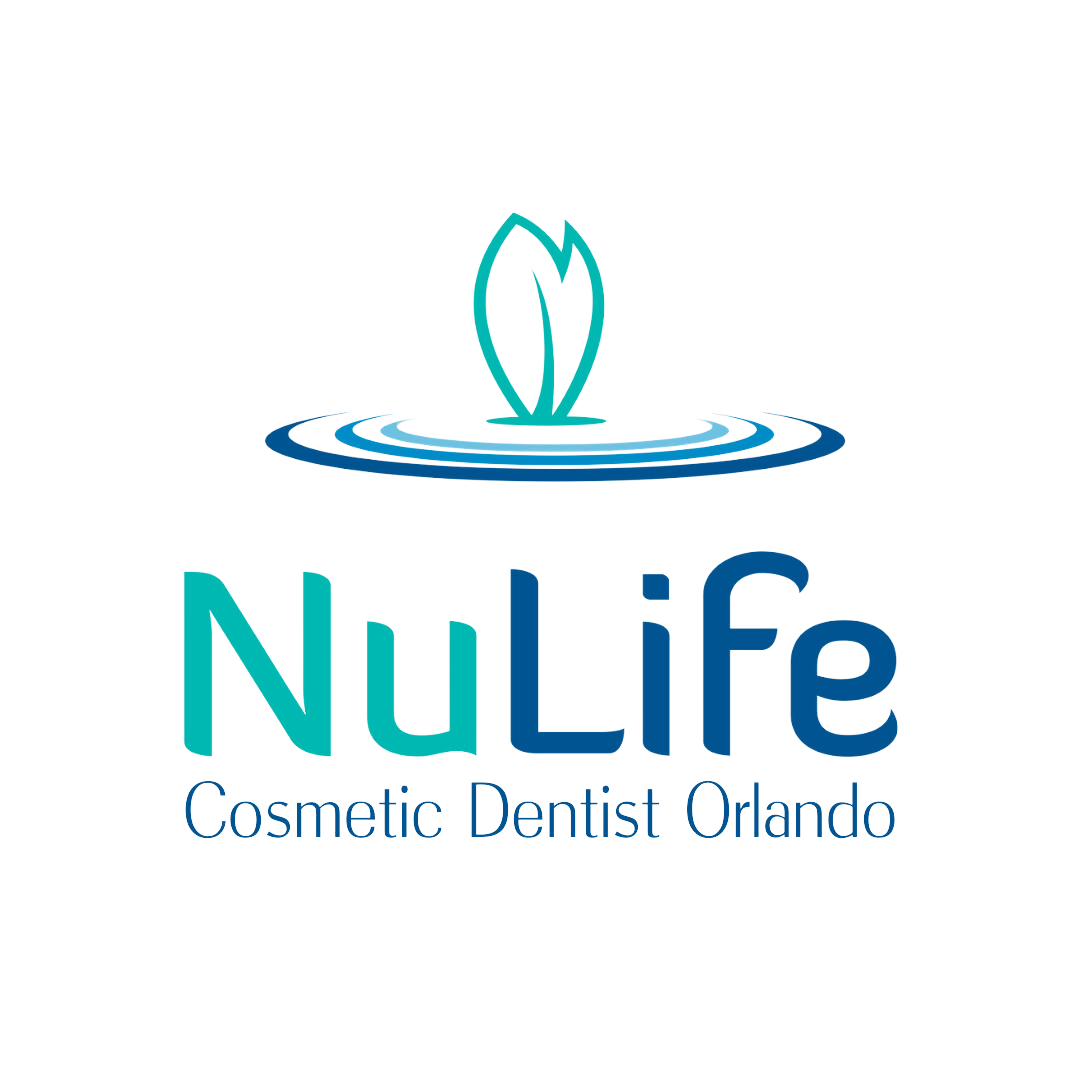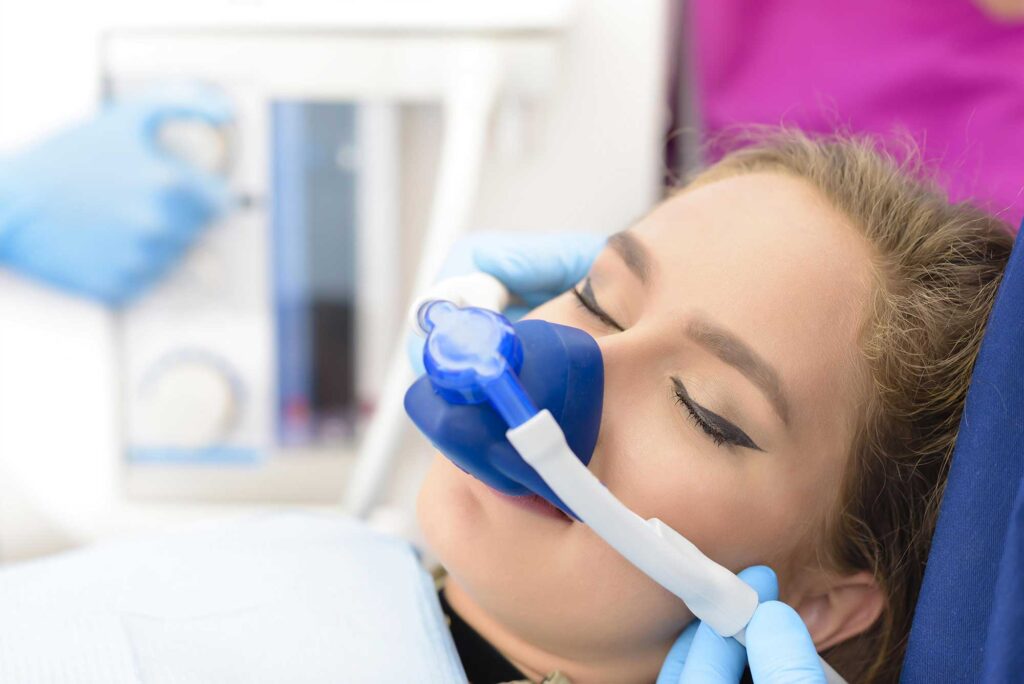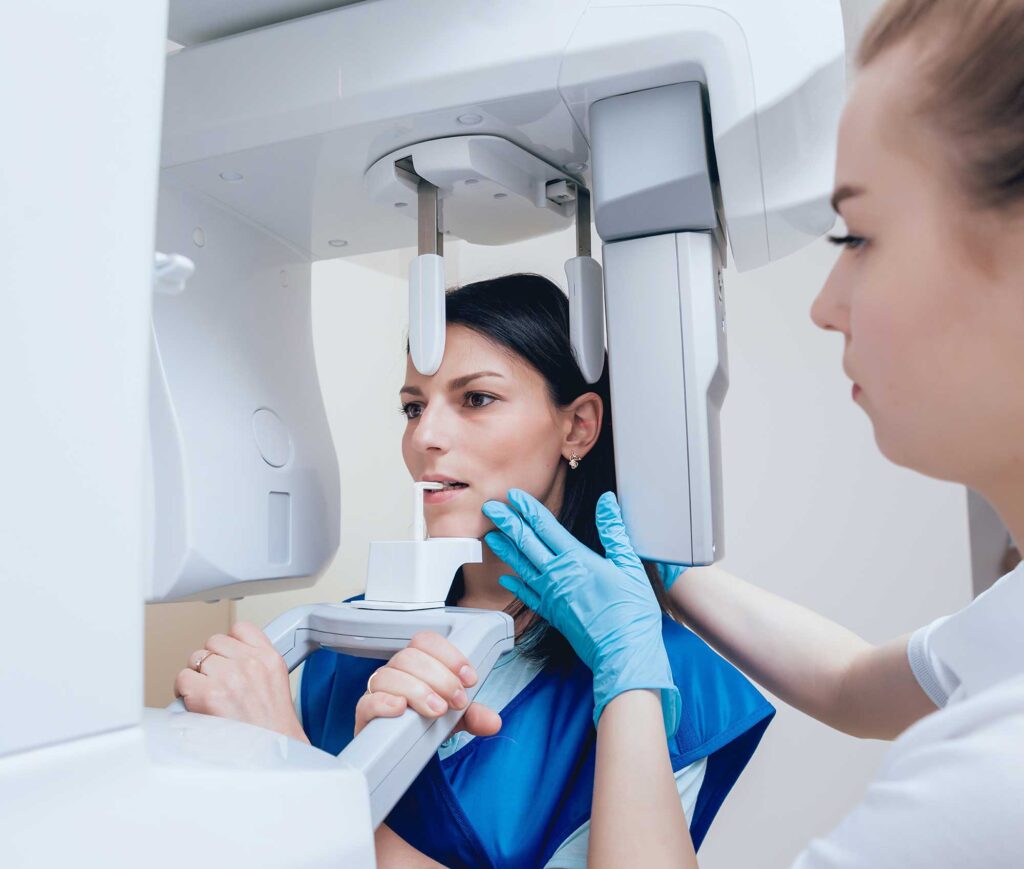

If the thought of having your teeth cleaned, or even the very thought of stepping into a dentist’s office grips you with fear, you’re not alone. Some people are so afraid of dentistry that they would rather live with toothache pain than to seek treatment. Putting your health at risk is never a good idea. For those people who suffer from dental fear, sedation dentistry may ease anxiety and make for a more pleasant appointment.
Oral conscious sedation is a type of sedation dentistry that uses medication in pill form in order to reach a level of relaxation so that a patient can calmly receive the dental work they need. The process is quite simple and comfortable for the patient. The pill is given to the patient a half hour to an hour before the dental procedure. The pill given is a type of Benzodiazepine (i.e. Valium or Halcion), which reduces activity in the part of the brain that controls fear and anxiety. This keeps the patient calm and worry-free, allowing dental treatments or somewhat invasive procedures to be performed without stress on the patient. If needed, nitrous oxide will be given to help with relaxation. Some patients, may fall asleep during the dental visit. At times, the medication will cause an amnesic effect, so you’ll have few memories of being in the dentist’s chair. Even though your oral procedure could take hours, it will feel like minutes.
With this type of sedation, you breathe in nitrous oxide, also known as laughing gas, through a mask placed over your nose. The gas helps to relax you, yet you are still coherent enough to respond to the doctor’s commands. Light sedation like nitrous oxide is used and for those with minor fear.
It’s quite common for people to feel nervous before a surgery or medical procedure. It seems to be even more common for people to fear a dental visit since dental work has traditionally been done with the patient wide awake and very aware of the work being done on their teeth. The pain associated with most procedures is what induces fear and anxiety, which results in so many people completely ignoring their oral health. And while Novocain lessens the pain, it does nothing to help with the fear and dread a lot of people have regarding dental appointments. Dental fear and low pain tolerance are associated with increased levels of cavities since many people would rather live with the cavity than step foot inside a dental office. This fear of the dentist and the inability to endure pain, can result in patients delaying a much needed trip to the dentist, or even avoiding the dentist’s office altogether. Neglecting your oral health can lead to cavities, tooth loss, gum disease, and overall health problems. However, with oral conscious sedation, your dental anxiety can be overcome.
Pain sensitivity is another reason for conscious sedation. The sedative keeps you relaxed during your treatment or surgery so that your jaw is not as tense. This means the post-treatment soreness is less than what it would be if no sedative was used at all.
Being a busy person is another reason people choose moderate sedation. If you need extensive work, it may be more convenient for you to have it done all at once. Some busy patients may choose to break up a procedure into more than one visit since certain procedures seem to take up a great part of the day. However, breaking up a treatment into more than one visit takes up more time. Being able to relax during a very long procedure will assist with it feeling like it has gone by quickly.
The dentist will prescribe the pill for you. All you have to do is take the pill about an hour before your appointment, and you’ll be feeling relaxed by the time you arrive. The nitrous oxide will be given right before the procedure. Most states require board-certification, which involves additional training in dosage, monitoring and safety, along with continuous education.
If you have a fear of needles, the pill is the best way to go. Rather than inserting a needle into a vein for IV sedation, with oral sedation, you can take the sedative by mouth before the appointment without having to worry about needles. Keep in mind that a treatment such as a filling will require analgesia like Novocain. The numbing would be given after the medication has taken affect and you have relaxed.
The cost of full anesthesia can cost hundreds of dollars while a pill can cost comparatively little.
The strong dosage of Benzodiazepine can cause a sort of amnesia or little to no memory of the procedure. This is one of the best side effects for someone suffering from dental fear. If you have no recall of the dental visit, it will make it easier for you to decide to return for another appointment.
The oral sedatives are all regulated by the FDA, so it’s extremely unlikely that there will be any dangerous side effects.
Although you may feel drowsy with pill sedation, you’ll still be awake and responsive. Since you’re awake during the procedure, you’ll be able to listen and respond to your dentist’s instructions.
The disadvantages of oral sedation are few. The most common disadvantage is that it takes longer for it to become effective. IV anesthesia and nitrous oxide act faster. The second most common disadvantage is the drowsiness that you will experience. You will need to take the pill before arriving at your appointment, which means you may arrive groggy and need assistance. It’s also possible that someone will need to stay with you for a while after you have returned home.
If you are fearful of dental treatments or are very anxious around dental instruments, you would be good candidate for oral sedation. If you don’t respond well to local anesthetics, you should consider this type of sedation as well. Also, if you have neck or back issues and may become quite uncomfortable in the dental chair, considering this technique will help you be more relaxed.
Most dentists can give minimal sedation like nitrous oxide and moderate sedation like valium, ketamine, or midazolam in pill form. The number of dentists who have completed the Commission on Dental Accreditation program on deep sedation and general anesthesia is small. Only those who have completed this program are allowed to use the deep sedation techniques. Those who have completed it are normally maxillofacial surgeons and dentist anesthesiologists. Each state has a dental board which regulates the conscious sedation techniques, the permits, and the minimal continuing education requirement.
When getting anesthesia, there is always a risk, but it is usually safe when administered by an experienced dental professional. Keep in mind, certain people such as those who are obese or have obstructive sleep disorder, should talk to their doctor before participating in conscious sedation. These people are more likely to suffer from complications. Vital signs will be monitored during the procedure and oxygen will be available. Your blood pressure will likely be checked since feelings of stress and fear will raise a person’s blood pressure. But conscious sedation is considered quite safe. It is effective for both pediatric patients and fearful patients with a low tolerance for pain. In fact, the use of conscious sedation with nitrous oxide has resulted in 86.3% of dental treatments being successfully completed. When you consider all the factors, oral conscious sedation is the way to go.
Make sure before the procedure, you and your doctor go over your medical history and determine if you are a good candidate for oral conscious sedation. Any medications you’re on should be discussed. It’s also a good idea to find out how much training the anesthetist has had and how often they have performed oral sedation dentistry. You should be able to get specific information from your dentist’s office or from their website. And always ask questions if you are unclear about anything.
Dental offices and their staffs feel quite confident that your stress and fear can be managed with oral sedation, nitrous oxide, or with the combination of the two. If you’re concerned about going to see the dentist and you’re putting off much needed dental care, sedation dentistry can help you conquer your anxiety. Contact your local dentist’s office today to discuss your options and the treatment you have been delaying.
Related Dental Services: Dental Services

Medical technology grows by leaps and bounds every day, and this statement is just as true in the field of dentistry. Dental care has become more advanced with scanning used as a detector for tooth decay. However, your dentist is using this technology for more than just looking for cavities. These scanning devices are used in making virtual models of your mouth for the purpose of dental prosthetics. More than 3 million Americans have dental implants, and over 8 million teens and adults have been Invisalign customers. In order to ensure a perfect fit for Invisalign, and to ensure implants are properly fitted, 3D scanning is the standard used by the dental industry when designing and creating dental prosthetics.
For those patients seeking straighter teeth for cosmetic reasons or to correct an improper bite, 3D scanning and modeling is used in making Invisalign aligners. Align Technology’s Invisalign brand enhances and corrects a smile which does wonders for your self-esteem. What some people don’t realize is that it’s important to correct a bad bite. Fixing the problem prevents dental deterioration and other oral health issues. It’s very important to get the aligners correctly made and fitted for your mouth. Awkward dental impressions or trays are no longer used for creating a treatment plan. 3D scanning is the most accurate way of providing aligners that will work best in an Invisalign treatment plan.
Your dental professional will create a 3D image of your teeth using an iTero scanner, which is from the makers of Invisalign. The iTero Element Scanner is used to ensure the correct and perfect aligner is tailored for you. Everyone has a different gum line, and iTero scans ensure a perfect fit.
Dental implants are the closest you can get to natural teeth and are for those people who have lost a tooth or teeth due to decay or injury. They allow you to smile, eat, talk, and laugh without worry. Implants are made from titanium alloy, which is similar to what is used for knee replacements. The artificial tooth is placed in your jawbone by a connector and is made to bond with your natural bone. Because implants are a substitute for natural teeth, and because they are meant to be permanent as opposed to dentures, it’s incredibly important to design and fit the artificial tooth with care and precision. 2D scanning was once the way the implant was designed, but it was often inaccurate. 3D scanning and 3D modeling is the best technology for creating and placing implants The iTero Element scanner is used for implant modeling and placement and not just for Invisalign products. The iTero scanner is a common appliance used for designing other dental restoration products.
3D imaging is slowly becoming the standard when it comes to aligners and other orthodontics. It allows dentists to digitally construct a model of your teeth and skull in 3D. No molds, plaster, or trays are used in this process. This unique perspective allows dental professionals to interact with the model and anticipate any difficulties, to effectively diagnose problems, and prescribe the treatment that is necessary. 3D scanning is commonly used for cosmetic and reconstructive purposes such as implants, crowns, and bone grafts, but as mentioned, it is also used to create 3D models to customize aligners for teeth straightening and to create an orthodontic treatment plan.
The dental imaging process begins by scanning the lower half of the face to create the image. The most common and most reliable method of executing this is by a cone-beam computed tomography machine, or CBCT machine. Small beams of radiation are used to scan the mouth, which results in a digital image. These pictures or images are compiled and converted into a 3D model for dental treatments.
A 3D image made with the use of a CBCT machine can be used for simple diagnostics, showing angles of the teeth that may not have been visible with a 2D device. However, CBCT produced dental images can also be used for more complicated diagnostics, such as identifying degenerative conditions and potential issues in the future. In addition to using 3D dental imaging for diagnostics, it can be integrated with digital impressions of teeth. Technology enables a dentist or oral surgeon to take these impressions with excellent accuracy in order to create dental restorations. This allows for a seamless and near perfect plan for treatment.
Because of the high precision of the 3D scanner, there are several advantages it has over traditional 2D imaging methods:
How is the Imaging Used?
Dentists can more effectively treat patients when they digitize the workflow. An example would be if a patient requires an implant, their mouth can be scanned by a 3D scanner or possibly two different scanners. A CAD model of the patient’s mouth is generated and a digital model for the implant is created with the CAM software. The model is sent to a dental lab to be designed and constructed for use within a few days. This helps to make the process quicker than before. And with access to the digital model before surgery, the dentist or orthodontist can get familiar with the patient’s mouth before the surgery takes place. This is a huge advantage in saving time and ensuring accuracy. This digital workflow can be used for many procedures and dental restorations.
There is more than one type of 3D dental imaging used by clinicians and oral surgeons. Let’s go over the three main types and discuss how they improve workflow.
CBCT is short for Cone-beam computed tomography. Using small beams of X-ray radiation, they rotate on a 360-degree axis while taking pictures of the mouth and face. The process is very quick and non-invasive since it only needs to rotate once around your head while you stand still. It has a limited field of view, which limits radiation exposure. After the images are taken, they are combined to make a model of the mouth. CBCT is also used today in mammography because it is more effective and safer than CT scans or an MRI.
The intraoral scanner (IOS) is a handheld device used in dentistry for capturing direct optical impressions. They are basically cameras that aid in creating a map for constructing a 3D surface model. Most often, these scanners exist in the form of a “wand”, which the operator inserts into a patient’s mouth. One of the most common and versatile 3D scanners is the itero Element. It’s perfect for any practice involved in digital dentistry. It’s designed to connect with orthodontic labs, custom crowns, bridges, veneers, implant abutment, and chairside milling. It also has easy connectivity to CAD and CAM software.
Technologies such as digital intraoral scanning (also known as digital impressions) and designing framework with CAD software are enhancing the quality of implant therapy and improving restoration results. Patient anatomy can be understood with remarkable detail through the digital collection of 3D data, and procedures can be virtually planned by using this CAD software.
This 3D technology has also made 3D printing possible. The availability of printed veneers, crowns, copings, night guards, and bridge models in an extremely short amount of time has made visits to the dentist and dental care more affordable and efficient for the patient. Plaster models that have been made and stored in a dentist’s office can be copied by the 3D printer so the casts no longer have to be stored.
Dentists and orthodontists know that 2D technology is on its way out. Digital dentistry is the way of the future with 3D scanning devices. 3D services can be found in most any dentist’s office with cone beam computer tomography being quite common. It gives a great image of what’s going on inside your mouth. The efficiency helps in providing a better patient experience while at your dentist’s office. With the increasing popularity and technical advancement of dentistry, treatment plans can be created quickly and with more certainty than ever before.
You are currently browsing the Orlando Dentist | NuLife Dental: Cosmetic Dentist blog archives for September, 2020.